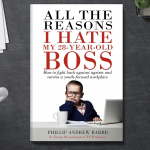Book Binding Styles
Whether you are putting together a softcover book or a creating deluxe hardcover edition, the same quality and attention to detail must go into the book’s physical design that went into developing good content. At Color House Graphics, we offer a variety of binding and finishing solutions to complete your project.
It’s important to consider how consumers will use your book. Different book bindings have various applications, and the binding you choose can influence the user experience considerably. Cost considerations also play an essential role in deciding the most appropriate bind style.
Plastic Coil and Double Wire Binding
Plastic coil binding uses a plastic coil to hold or bind the printed pages together. The text and cover are punched with a series of small holes on the book’s bind edge. Once the coil is formed to fit the book’s thickness, it is woven into the punched holes.
When the term ‘wire-o or double wire binding’ is used, it typically means that preformed metal wire is used to bind or secure the pages into the book.
Double wire binding holds the pages of the book in place by a double-loop wire inserted through punched holes on the books bind-edge. Double wire binding allows the book or printed document to lie flat while allowing the content to line up evenly between the facing pages.
Spiral wire and double wire binding are both great options for books or documents that require notes. By adding perforation along the bind-edge of the page, the user can easily remove pages from the book.


Typical Uses Include:
- Technical Manuals
- Presentations
- Notebooks
- Calendars
- Reference Books
- Reports
- Journals
- Recipe Books
- Teacher and Student Study Guides
- Music Books.
Saddle Stitch Binding
Saddle stitching utilizes staples to bind a book. Pages and covers are folded and gathered, then stapled through the fold along the spine. This style is suitable for both self-covered books (where the cover stock, or paper, is the same as the text) and books with separate covers. These books are often referred to as booklets and have a lower page count. Generally, the maximum number of pages is 96, but this number may vary depending on the weight and bulk of the paper used.
Saddle or wire-stitch binding is an excellent binding style for printed marketing materials like brochures, pamphlets, and magazines.
Other applications include:
- Journals
- Coloring books
- Booklets
- Brochures
- Catalogs
- Manuals
- Workbooks
Case Bound (Hardcover Books)
Case Binding, or hardcover, is the most durable and long-lasting option with rigid protective covers. Typical cover materials are binder’s board or heavy paperboard covered with cloth, printed and wrapped sheets, or leather. This binding style is typically used for books that require a strong, high-quality finish. The printed signatures are collated, and then sewn or adhesive bound. The cover is then glued to the spine and end sheets of the trimmed book block.
This option is great for yearbooks, textbooks or anything that may see a lot of use, as the durability will ensure it stands the test of time.
Typical Uses Include:
- Hardcover Books (Trade fiction and non-fiction)
- Reference Books
- Children’s Books
- Text Books
- Coffee table or Deluxe Editions


Perfect Binding
Perfect binding is the most common bind style for commercially produced paperback books. It is similar to hardcover binding in many ways, but significantly less expensive. The cover is usually made from a thicker cardstock and laminated or coated to protect the book. The spine is glued or threaded together – PUR adhesive is used when the text is printed on gloss and matte coated paper. This adds superior strength to the binding.
Perfect binding is an economical alternative to hardcover and is still an excellent form of presentation. Not only is it a cost effective way to produce softcover books, but it also helps reduce shipping costs.
Typical applications include:
- Fiction and Nonfiction Trade Paperback Books
- Large Magazines
- User Manuals
- Textbooks/Workbooks
- Coloring Books
- Large catalogs
If you have any questions about bind styles or would like to speak with someone about a future project, contact us today. We’re always available to help!






